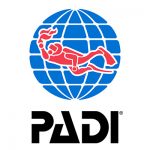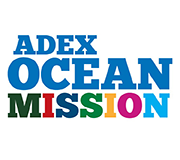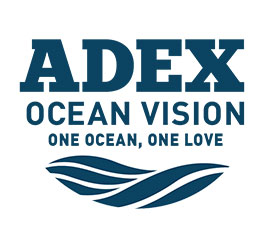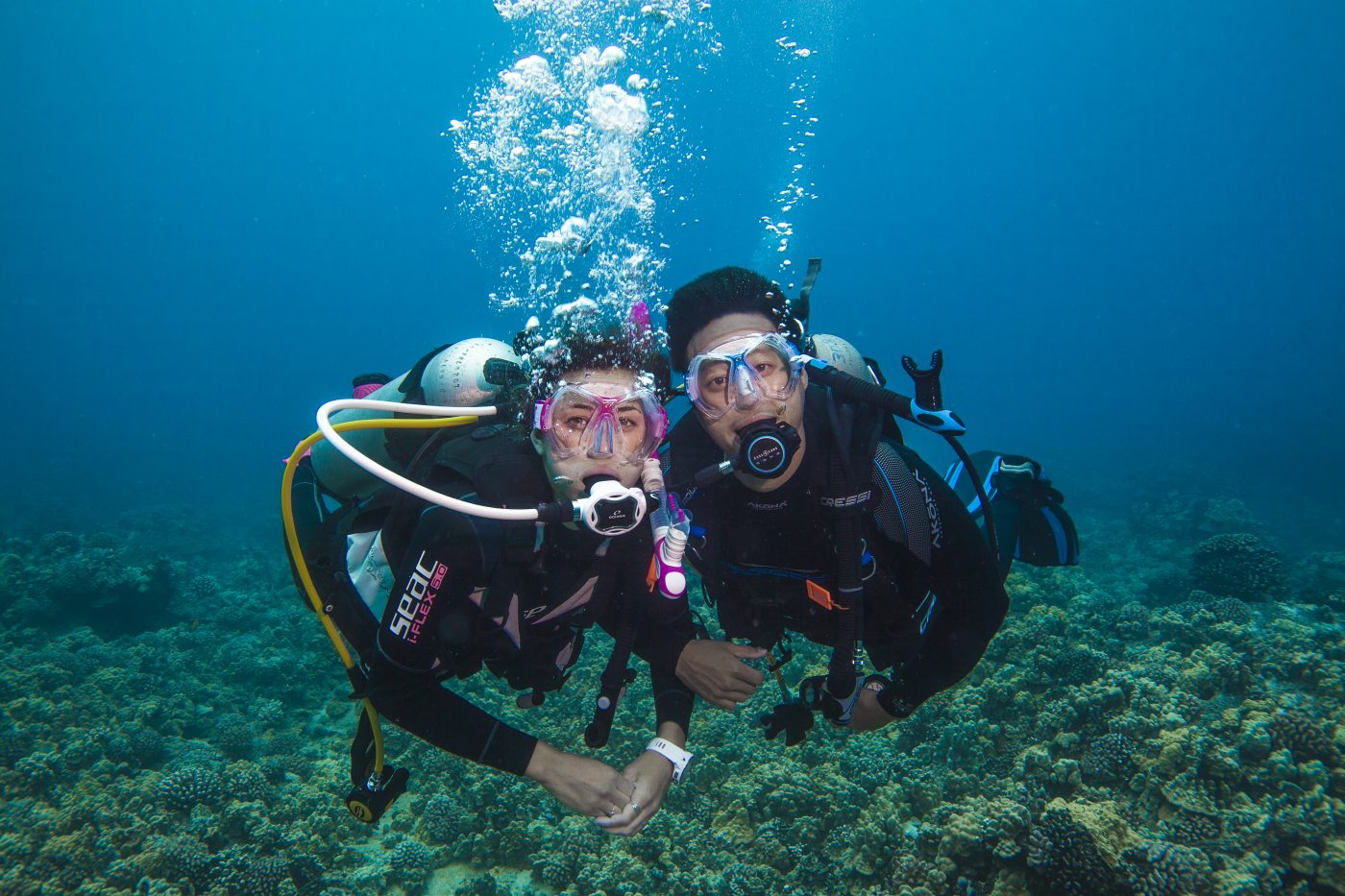A Shared Passion and Vision Between Two Friends
Renowned as the world’s largest scuba diving training organisation, the Professional Association of Diving Instructors (PADI) was dreamt up by two friends concerned about the state of the scuba diving industry some 53 years ago in the state of Illinois, USA.
Some 13 years after the invention of the aqualung had made scuba diving a reality, the certification of scuba divers was still not top notch with many scuba certification agencies providing instructions which were not up to date. Good friends John Cronin, a scuba equipment salesman for U.S Divers and Ralph Erickson, an educator, university water polo coach, champion swimmer, lifeguard and waterman, were suitably concerned about the future of the sport as they felt that scuba diving instructors needed better support to facilitate an easier learning process for people interested in learning how to breathe underwater.
One fateful night in 1966, while chatting in Erickson’s Illinois apartment in Morton Grove over Cronin’s favourite bottle, the duo finally decided to bring their vision for scuba diving to life. They would start a scuba training association which would provide professional support services to dive instructors with professional standards and professionally certified curriculum for diving instructors. With certified, relevant and instructionally valid scuba diving training, more people will be able to get easier access to enjoy the underwater world, thereby raising the numbers of confident scuba divers who dive regularly. With John insisting on the word “professional” for their new moniker and Ralph asserting the need for an “association of diving instructors”, the Professional Association of Diving Instructors (PADI) was born.
Humble Beginnings
The first few start-up meetings for their new venture took place in “several restaurants in Morton Grove and Niles, Illinois”. Within a few months, however, the duo had established the first PADI headquarters in the basement of Cronin’s home on Main Street in Niles. They even hired Cronin’s next-door neighbour to stand in as a part-time secretary for PADI.

How PADI Got Its Diver’s Torch Logo
Inspired by The Silent World, Jacques Cousteau’s groundbreaking book on scuba diving, Erickson had come up with the idea of a diver with a torch in his hand in a globe after Cronin had mentioned that he wanted PADI’s logo to be something classy like National Geographic’s. Although they were essentially just a two-person operation, Cronin’s comments changed Erickson’s view of the company. Now, he could envision big things for PADI. After spotting a photo of French divers descending into the water with burning torches in hand, Erickson came up with the first PADI logo. This photo can still be seen hanging in the PADI Worldwide global office in California.
The Growth of PADI
The growth of PADI was organic in the early years. Instead of going with the military-structured “know it all entry level course” that most agencies were using at the time to “weed people out”, Erickson wanted PADI to have a “continuing educational course structure”. PADI introduced its first advanced diver course in 1967 along with its first specialty diver programmes. Although growth was slow, PADI had about 400 members by the late 1960s.
PADI’s first strategic move that aided its eventual success was the introduction of the “first positive identification certification card” that had the diver’s photograph on it. This idea for a photo on your certificate was suggested by Paul Tzimoulis, who eventually became editor of Skin Diver magazine, when Cronin first met him at a large National Sporting Goods Association show in New York City.
Still working at U.S. Divers, John Cronin was promoted to Sales Manager at his job and had moved with his family to Huntington Beach, California while maintaining his board position at PADI. Ralph Erickson also continued to pursue his career as a water polo coach at Loyola University in Chicago, Illinois and continued to serve as a PADI board member, consulting with PADI staff, helping to expand PADI’s “continuing education offerings” for divers. The PADI office moved to California in 1970 with key operational staff making the move as well.
An active diver and instructor, Erickson continued to help develop standards and courses at PADI by working with PADI’s early training managers. The PADI Open Water Diver certification was launched in 1972 as the preferred entry-level rating. Divers now needed to complete two times the number of open water dives as previous courses.
By the late 1970s and early 1980s, PADI had revolutionised scuba training by creating modular scuba training programmes with original integrated multimedia student and instructor educational materials. By the first half of the 1980s, PADI had successfully filled its ranks with the industry’s most experienced and professionally credentialed diving talent. Their expertise in instructional design, marketing, international business and development of educational systems, retail and resort programmes further established PADI’s leading status in the diving industry. PADI’s extensive scientific study in hyperbaric diver table research in the late 1980s led to the development of the Recreational Diver Planner.
When John Cronin retired as CEO of US. Divers/Aqualung and took the reins of PADI as CEO in 1986, PADI had become the leading scuba diving training organisation in the world. As the leading educator in underwater training, everyone at PADI felt the responsibility of educating the public on marine conservation.
“We want to feel that our children, their children and generations to come will be able to enjoy the underwater world that has given us so much,” said John Cronin. “There are so many significant problems facing mankind, but as divers this is truly our cause. If scuba divers do not take an active role in preserving the aquatic realm, who will?”
With marine conservation in mind, PADI initiated Project AWARE as an environmental ethic in the late 1980s and the Project AWARE philosophy was integrated into PADI Diver training courses. [Project AWARE (Aquatic World Awareness Responsibility and Education) is a global movement for ocean protecting powered by a community of adventurers. It engages snorkelers and divers in activities such as beach clean-ups and establishing marine parks and marine protected areas]. Eventually, in 1992, the Project AWARE Foundation was established as a non-profit organisation in the United States.
PADI Today
John Cronin passed away in 2003 with his friend and PADI co-founder, Ralph Erickson, following suit three years later.
Led by Dr. Drew Richardson, President and CEO, PADI remains the world’s largest recreational diver training organization with more than 6,600 dive centers and resorts and 137,000 professional members worldwide. Issuing 1 million certifications each year, PADI continues to make underwater exploration, travel and adventure accessible to people around the world while maintaining the highest industry standards for dive training, safety and customer service.
PADI is committed to being best in and for the world, supporting social and environmental efforts through its Pillars of ChangeSM, empowering divers with information to get involved with causes they care about in a tangible way.
“PADI is committed to be a force for good,” says Richardson. “We’re privileged to have a powerful legacy to inspire us. By empowering divers and connecting them to the PADI family and global issues relevant to the dive industry, we can help make the world a better place and become an even more powerful catalyst for change. By engaging divers more effectively at the local level globally, global change is inevitable.”


